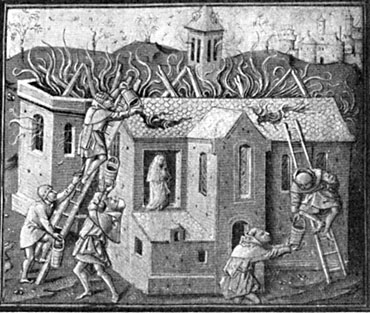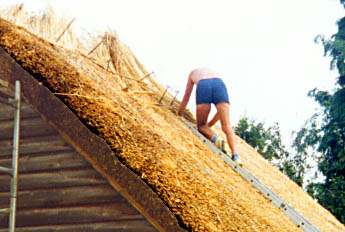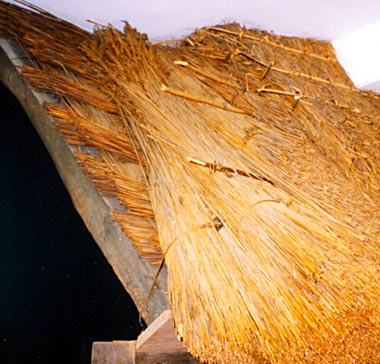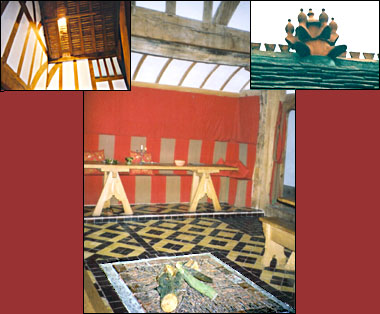
Fighting a fire, ca.1460.
Source: Bibliothèque Nationale, Paris,
MS frant. 9198.
Fire was one of the most dreaded threats to medieval town-dwellers and nowhere more so than densely populated London. As the illustration above shows, fire prevention was a smarter approach than trying to fight fire with medieval technology. Once building regulations were in place and juries convened at periodic ward moots were required to inform the authorities of fire risks and of householders not equipped with the necessaries to fight fire (barrels of water and ladders), the incidence of widespread fires in London dropped.

Thatching at Haddenham, 1990
Photo © S. Alsford
Use of straw or reeds to cover roofs was one of the earliest targets for prohibition. Yet as late as 1422 we find a London wardmoot jury reporting that fifteen cottages in Chancery Lane (suburbs) had been roofed with straw. The popularity of thatch was that the materials were relatively abundant locally and cheap.

Exhibit showing thatching technique,
Bridewell Museum, Norwich
Photo © S. Alsford
Thatching was done by tying the roofing material into bundles and placing it in layers, pegged into position with rods of hazelwood or withy. Notwithstanding concerns about the fire risk, thatching is still a trade plied in many English villages, for the rustic look it gives is valued by house-buyers; fire-retardant chemicals applied to the thatch and to the house timbers now reduce the risk.
Open hearths were another fire-risk concern of the authorities. But the introduction of chimneys did little at first to help matters, since they were constructed of timber.

The open hearth in the hall at Barley Hall, York.
Smoke was to escape via a smoke-hall, or louver, in the roof (left inset);
the decorative item atop the roof (right insert) also appears to be
associated with venting smoke.
Photos © S. Alsford